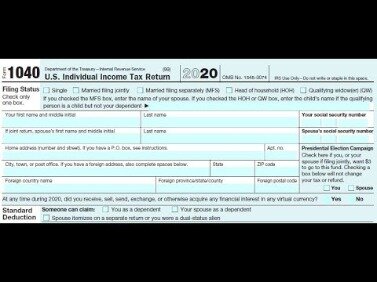5 1 Describe and Prepare Closing Entries for a Business Principles of Accounting, Volume 1: Financial Accounting
Contents:


trade discountants do not update the general ledger account inventory when their company purchases goods to be resold. The accountant removes the balance to another account at the end of the year. While both the periodic and perpetual inventory systems require a physical count of inventory, periodic inventorying requires more physical counts to be conducted.

When the income statement is published at the end of the year, the balances of these accounts are transferred to the income summary, which is also a temporary account. Revenue accounts are used to track the amount of money earned during a particular period of time. Money received for goods and services sold during the accounting period is recorded in these statements.
The gross profit method is an estimate of the ending inventory in the period. You can use this in the interim period, the time between physical counts, or to estimate how much stock you lost in the case of a catastrophic event. Accountants do not consider it as an airtight method to determine the annual inventory balance, as it is not precise enough for financial statement reporting.
Define Product Sourcing and Storage Methods
Examples of contra accounts include purchases discounts or purchases returns and allowances accounts. Has expanded their product offerings to include Square for Retail POS. This enhanced product allows businesses to connect sales and inventory costs immediately. A business can easily create purchase orders, develop reports for cost of goods sold, manage inventory stock, and update discounts, returns, and allowances.
Clearing accounts are used separately from the main ledger and the actual checking bank account. This helps reduce the possibility of unwanted mistakes in reporting to the minimum. A checking account is a bank account that allows you to withdraw and deposit money. A temporary account entry can be made both manually or through automated programs.

The company must know the total units of each good and what they paid for each item left at the end of the period. In other words, the company attaches the actual cost to each unit of its products. This is simple when the products are large items, such as cars or luxury technology goods, because the company must give each unit a unique identification number or tag. There are several differences in account recognition between the perpetual and periodic inventory systems. Is a term used when inventory or other assets disappear without an identifiable reason, such as theft. For a perpetual inventory system, the adjusting entry to show this difference follows.
The net balance in the income and summary account and the balance in dividends paid account are carried to the retained earnings account. These accounts are temporary accounts while all other accounts are permanent accounts. The three types of temporary accounts include revenue accounts, expense accounts, and income summaries.
The balance in the Income Summary account equals the net income or loss for the period. This balance is then transferred to the Retained Earnings account. Companies are required to close their books at the end of each fiscal year so that they can prepare their annual financial statements and tax returns.
Examples of temporary and permanent accounts
In this case, you will need to credit your business expenses account in order to zero it out, since a credit will decrease an expense account balance. Inventory formulas are equations that give you insight into the health and profitability of your inventory. Useful formulas to know are inventory turnover, which is cost of goods sold ÷ average inventory, and sell-through rate, which is units sold ÷ units received over a set period of time. There are many economical inventory management tools on the market. Some are even free, such as Square POS. Most of these systems deliver everything you need to manage inventory.
Once the COGS balance has been established, an adjustment is made to Merchandise Inventory and COGS, and COGS is closed to prepare for the next period. Before we dive into the COGS details for the periodic system, begin to familiarize yourself with this chart. This is a quick way to compare the differences between how the two methods record the details involved with inventory. So, open a suspense account and hold the funds there as you investigate the discrepancies in your books. Or, you may be unsure of what type of account you should use for a payment or bill. If you’re unsure, speak with your accountant about how to classify your transaction.
Calculate COGs for each line item, and then add them together to get the period’s COGS. Periodic tracking is easy to implement but limits the details you know about your inventory at any given time. 1258, after disc expiredThe net method allows you to track discounts lost, which then gives you a direct read on how much profit you are losing to what is essentially a finance charge.
What Is Periodic Inventory?
A temporary account is an account that will be closed after a while. In clearing accounts, reconciliation is trouble-free, as you are not afraid to mess up the books. If there are issues or missing transactions, they can be easily identified. If all transactions match and the account clears to a zero balance, then reconciliation is successful. Using a clearing account as a buffer allows business owners and accountants to match all kinds of financial details in a “buffer” mode.
As you can see, weighted average in a periodic system is a calculation done outside of the ledger. In this method, you calculate an average for the period instead of moving transactions over when the company bought or sold something during the period. To maintain consistency, we’ll use the same example from FIFO and LIFO above to the calculate weighted average. In this example, the physical inventory counted 590 units of their product at the end of the period, or Jan. 31. Weighted average cost in a periodic system is another cost flow assumption and uses an average to assign the ending inventory value. Using WAC assumes you value the inventory in stock somewhere between the oldest and newest products purchased or manufactured.
Record sales discount by debiting the sales discount account and crediting the accounts receivable account. Record inventory sales by crediting the accounts receivable account and crediting the sales account. Record the purchase returns by debiting the accounts payable or accounts receivable account and crediting the purchase returns account. The ongoing information also helps businesses keep more granular information on cost per item sold, which is a major factor in profit margins and overall profitability.
How do temporary accounts differ from permanent accounts?
However, with a perpetual system, you need to make more decisions to use it successfully. A perpetual inventory system is a software system that continuously collects data about a company’s products. A perpetual system tracks every transaction as it happens, including purchases and sales. The system also tracks all information pertinent to the product, such as its physical dimensions and its storage location. When a sales return occurs, perpetual inventory systems require recognition of the inventory’s condition.
- While both the periodic and perpetual inventory systems require a physical count of inventory, periodic inventorying requires more physical counts to be conducted.
- The gross profit method is an estimate of the ending inventory in the period.
- Remember, the discount does not apply to shipping costs that are passed through to the buyer.
A purchase return or allowance under perpetual inventory systems updates Merchandise Inventory for any decreased cost. Under periodic inventory systems, a temporary account, Purchase Returns and Allowances, is updated. Purchase Returns and Allowances is a contra account and is used to reduce Purchases. The income summary is used to transfer the balances of temporary accounts to retained earnings, which is a permanent account on the balance sheet. A clearing account is a general ledger, which helps businesses and accountants to keep the details about financial transactions on a temporary basis. It’s created to just record the income or the expenses before they will move to the retained earnings in the balance sheet.
Then the temporary account will begin the next accounting period with no revenue. Temporary accounts are interim accounts that track a company’s financial activity during a specified time period. These accounts are short-term and typically close at the end of every accounting period.
FIFO means first-in, first-out and refers to the value that businesses assign to stock when the first items they put into inventory are the first ones sold. Products in the ending inventory are the ones the company purchased most recently and at the most recent price. In a periodic FIFO inventory system, companies apply FIFO by starting with a physical inventory. In this example, let’s say the physical inventory counted 590 units of their product at the end of the period, or Jan. 31. These software systems support your current stock-keeping method. You can use them to get paper inventory lists, import the stock data and calculate the data you need to order more stock and reconcile the stock you have for a new period.
You can build an online store in minutes, for free – business.inquirer.net
You can build an online store in minutes, for free.
Posted: Thu, 20 Apr 2023 18:02:00 GMT [source]
In addition, since there are fewer physical counts of inventory, the figures recorded in the system may be drastically different from inventory levels in the actual warehouse. A company may not have correct inventory stock and could make financial decisions based on incorrect data. The closure of temporary accounts must coincide with the end of the accounting period to which they relate. This is not exactly a closure, as the account continues to exist. What is do is to bring the balances to record the corresponding changes, and in the case of income and expense accounts to zero.
The guide has everything you need to understand and use a periodic inventory system. You’ll find basic journal entries, formulas, sample problems, guidance, expert advice and helpful visuals. Square accepts many payment types and updates accounting records every time a sale occurs through a cloud-based application.
Lobe Sciences, Ltd. Provides Update on Vitamind – Investing News Network
Lobe Sciences, Ltd. Provides Update on Vitamind.
Posted: Fri, 21 Apr 2023 21:53:09 GMT [source]
They can create concrete boundaries to separate economic activity for better tracking and more efficient financial management. Because you don’t close permanent accounts at the end of a period, permanent account balances transfer over to the following period or year. Before you can learn more about temporary accounts vs. permanent accounts, brush up on the types of accounts in accounting. A.Permanent accounts are the ones that continue to record the cumulative balances over time.
With slower-shipping suppliers or seasonal purchases, you’ll have fewer and larger purchases, which ties up more cash in inventory. How you source and store the various products you sell determines how you manage your inventory. If you stock all products in your own facility, your inventory controls and processes are handled internally.